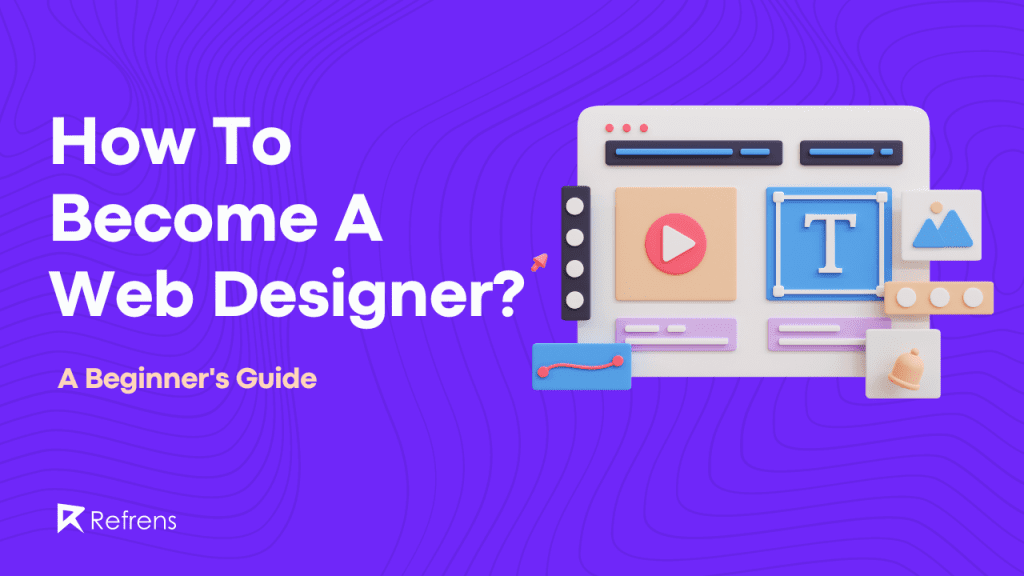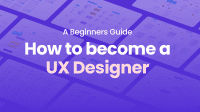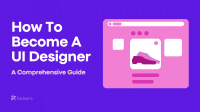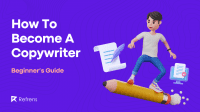The digital world has swept us off our feet, and websites have become our primary interface with this realm. They have transformed into essential platforms for businesses, educational institutions, and even individuals. This has exponentially expanded the need for talented web designers.
You might be thinking, “How do I become a web designer?”
This is precisely what I am going to talk about today.
Together, we will journey through this engaging landscape of colors, layouts, and codes, arming you with the knowledge you need to embark on your web design journey.
Let’s jump right in, shall we?
Understanding Web Design
Web design is the process of planning, conceptualizing, and arranging content intended for the Internet. The primary focus is on the aesthetics of a website and its usability. Web designers use various design programs, such as Adobe Photoshop, to create the layout and other visual elements of the website.
However, web design goes beyond the visual aspect. It also involves user experience design (UX), search engine optimization (SEO), and creating content that delivers value to the website’s visitors. A well-designed website is not just visually appealing but also easy to navigate, mobile-friendly, and quick to load.
Understanding web design involves grasping the basic principles of design like branding, color theory, and typography. It’s about learning how different colors invoke certain emotional responses from users, how typography affects readability, and how an effective brand image can be built through a website.
Ultimately, web design is about creating an intuitive and engaging interface that provides a seamless user experience.
A well-executed web design ensures visitors can easily find the information they need, encouraging them to spend more time on the website, and thereby increasing the chances of converting these visitors into customers.
What Does a Web Designer Do?
Web designers play an integral role in building a website. They design the website’s look and feel, plan the user journey across the site, and ensure the website is intuitive and user-friendly.
A web designer’s tasks can vary significantly, depending on the project’s requirements. However, typical responsibilities include:
- Layout Design: Designing the layout involves deciding on the placement of images, text, and other website elements. It requires an understanding of both aesthetics and functionality.
- Graphic Design: This involves creating custom graphics for the website, like logos and icons. It requires a keen eye for detail and creativity.
- Logo Design: This specifically involves creating logos for brands and companies. Designers may also use logo maker which can streamline the process, helping in crafting professional designs quickly and efficiently.
- UX Design: A web designer must ensure a seamless user experience. This involves creating a user-friendly layout with intuitive navigation and logical page hierarchy.
- Responsive Design: With the variety of devices used to access the Internet today, a web designer must ensure that the website looks good and functions well on all screen sizes.
- SEO: Although not directly related to design, understanding SEO principles can help a designer create a more effective website. A good web design considers SEO in its structure to ensure high visibility in search engine results.
Web designers often work closely with web developers, digital marketers, and content writers to create a cohesive website that aligns with the brand’s goals. Thus, strong communication and teamwork skills are crucial in addition to technical skills.
Key Skills to Become a Web Designer
Web design is a field that merges creativity with technicality. As such, the skills required to become a web designer are a mix of artistic talent, technical knowledge, and interpersonal abilities.
Technical Skills
- HTML/CSS: These two are the building blocks of web design. HTML stands for HyperText Markup Language, which is used to structure content on the web. On the other hand, CSS, or Cascading Style Sheets, is used for styling—changing fonts, colors, spacing, etc.
- Design Software: Web designers should be proficient with design software such as Adobe Photoshop and Illustrator. These are key tools used to create website layouts and graphic elements.
- Responsive Design: With a wide range of devices available today, designers need to ensure that websites look good and work well on all types of screens – from desktops to mobile devices.
- UX/UI Design: Understanding the principles of user experience (UX) and user interface (UI) design is essential. This will help you create websites that are not just visually pleasing, but also user-friendly and intuitive.
Soft Skills
- Communication Skills: As a web designer, you’ll often need to collaborate with clients, developers, marketers, and other team members. Clear and effective communication is crucial to conveying ideas and understanding project requirements.
- Problem-Solving Skills: Web design involves solving a myriad of problems, from user experience issues to design challenges. Being able to think critically and find effective solutions is key to success in this field.
- Creativity: Web design is an inherently creative field. The ability to think outside the box and come up with unique designs will set you apart.
- Time Management: Whether working on multiple projects simultaneously or dealing with tight deadlines, efficient time management is vital.
How to Learn Web Design
Becoming a web designer doesn’t necessarily require a degree in design or a related field. With numerous online resources available, you can self-study and practice to acquire the necessary skills.
Here’s how:
Online Courses
There are various online platforms, such as NxtWave, Coursera, Udemy, and LinkedIn Learning, that offer comprehensive courses in web design. These courses usually cover everything from the basics of HTML and CSS to UX/UI design and the use of design software like Adobe Photoshop.
Practice
The age-old saying ‘practice makes perfect’ holds true in web design. Try creating your own website or redesigning existing websites. This not only helps you understand the practical aspects of web design but also allows you to create a portfolio of your work.
Online Communities
Joining online communities can also be a great learning resource. Websites like Stack Overflow and Reddit have active web design communities where you can learn from experts, ask questions, and get feedback on your work.
Building a Web Design Portfolio
Building a web design portfolio is a crucial step in your journey to becoming a web designer. Your portfolio is your chance to showcase your skills and creativity to potential employers or clients.
Here are some tips on creating an effective portfolio:
- Include Your Best Work: Your portfolio should only include your best work. It’s better to have a few excellent examples than numerous mediocre ones.
- Showcase a Range of Work: Include a variety of work that showcases your skills. This could include website designs, graphic designs, and any personal projects.
- Provide Context: For each piece of work, provide some context. Discuss the project’s brief, your role, the design process, and the final outcome.
- Make It User-Friendly: Remember, your portfolio itself is a testament to your web design skills. Ensure it’s easy to navigate, visually pleasing, and responsive.
Keep It Updated: Regularly update your portfolio with your latest work. This shows that you’re active in the field and continuously honing your skills.
Recommended read: Designing Your Narrative: Portfolio Inspiration from Top Professionals
Finding Web Design Jobs
Once you’ve developed your skills and built a portfolio, it’s time to start looking for web design jobs. Here are a few options:
In-House Web Designer
Many organizations hire in-house web designers. As an in-house designer, you’d be working on the company’s web design projects, collaborating closely with other teams, and enjoying the stability of a regular paycheck.
You can look for such positions on job sites like LinkedIn and Indeed.
Agency Web Designer
Design agencies offer a wealth of opportunities for budding web designers. Working in an agency, you’ll likely have exposure to a range of projects and clients, offering a valuable learning experience and the opportunity to diversify your portfolio.
Starting Your Own Web Design Agency
If you have an entrepreneurial spirit, you might consider starting your own web design agency. This path gives you the freedom to shape your business, hire your own team, and take on projects that align with your interests.
A few years ago, I embarked on an exciting venture and started my own web design agency, ‘Aligency Studio’. My desire to have more control over my work, select initiatives that truly reflected my vision, and build a team of individuals who shared my enthusiasm for cutting-edge web design were the driving forces behind this decision. It opens many other doors Here’s How you can do it:
Setting Up A Business
The initial phase involved lots of planning and strategizing. I needed to define my services, establish my pricing, and identify my target market. I also created my own website, where I showcased my portfolio and communicated the unique value my agency offered.
Selling Templates
In addition to offering bespoke web design services, I decided to sell website templates. This decision was based on the realization that many small businesses needed quality design but couldn’t afford custom solutions.
My templates catered to this market, offering high-quality design at a fraction of the cost. The revenue generated from template sales also provided a stable income source, supporting the agency during slower periods.
Building a Team
As my agency grew, I hired a small team of talented designers and developers. Creating a culture of creativity and continuous learning was essential to me. I encouraged my team to stay updated with the latest design trends and fostered an environment where everyone felt comfortable sharing ideas and insights.
The Challenges and Rewards
Running my own agency hasn’t been without challenges. From finding clients to managing business operations, the responsibilities are significant. However, the rewards far outweigh the challenges. There’s immense satisfaction in turning a client’s vision into reality, providing cost-effective solutions through our templates, and creating an agency that values innovation, learning, and collaboration.
However, it also involves more responsibilities, such as business development and client management.
Mastering the Tools of the Trade
In your journey to becoming a web designer, getting to grips with the right tools is an essential step. Mastering these tools will not only improve the quality of your work but also speed up your design process and make your life as a web designer significantly easier.
Design Software
The most popular design software among web designers includes Adobe Photoshop and Adobe Illustrator. Photoshop is excellent for editing photos and creating graphics, while Illustrator is used for creating vector images like logos and icons. Mastering these tools will allow you to bring your creative ideas to life.
Coding Tools
When it comes to coding, tools like Sublime Text, Atom, and Visual Studio Code offer a user-friendly interface for writing and editing code. They also provide helpful features like syntax highlighting and auto-completion, which can significantly speed up your coding process.
Content Management Systems
Content Management Systems (CMS) like WordPress, Joomla, or Drupal are platforms that allow you to build websites without having to code from scratch. They provide a more streamlined and efficient way of building websites, especially for those with less coding experience. Drupal development, in particular, offers robust features and flexibility, making it a popular choice for more complex websites.
Prototyping Tools
Prototyping tools like Sketch, Figma, and Adobe XD allow you to create interactive prototypes of your web design. These can be very helpful when you want to test your design and get feedback before starting the coding process.
Continuous Learning and Improvement
One thing that’s certain in the field of web design is change. With new design trends and technologies emerging all the time, continuous learning is a crucial part of being a successful web designer.
Stay updated with the latest trends in web design by following popular design blogs and websites. Join online communities and forums where designers share their knowledge and experiences. Attend webinars and workshops, and don’t shy away from online courses that can help you learn new skills or deepen your existing ones.
Beyond staying up-to-date, look for opportunities to apply what you learn. The best way to solidify new knowledge is by using it in real-world situations. So, experiment with new techniques on your personal projects, or propose fresh ideas to clients.
Remember, improvement is a continuous process. It’s okay to not know everything. Even the most experienced web designers are still learning. What’s important is the willingness to grow and adapt. After all, the more you learn and grow, the more valuable you become as a web designer.
While it may seem challenging at first, with the right mindset, tools, and continuous learning, you can become a successful web designer.
Conclusion: The Journey to Becoming a Web Designer
Embarking on the journey to becoming a web designer can be exciting and rewarding, but it requires dedication and continuous learning. From mastering the foundational principles of web design theory to getting hands-on experience building websites, there’s a lot to learn and explore in this field.
But the learning doesn’t stop once you’ve become a web designer. The digital landscape is constantly evolving, with new design trends and technologies emerging all the time.
As a web designer, you need to stay up-to-date with these trends to continue delivering effective and visually appealing designs.
Networking is another key aspect of becoming a successful web designer. By attending networking events and joining popular online communities, you can connect with other professionals in the field, learn from their experiences, and even find new opportunities.
Finally, always remember that every web designer has their own unique path and pace. It’s okay if you don’t know everything at once or if you make mistakes along the way. What’s important is your determination to learn and grow.
Whether your goal is to become a freelance web designer, work in an agency, or launch your own web design business, there’s a world full of opportunities waiting for you in the web design industry. Now, go forth, and start your web design journey!


















